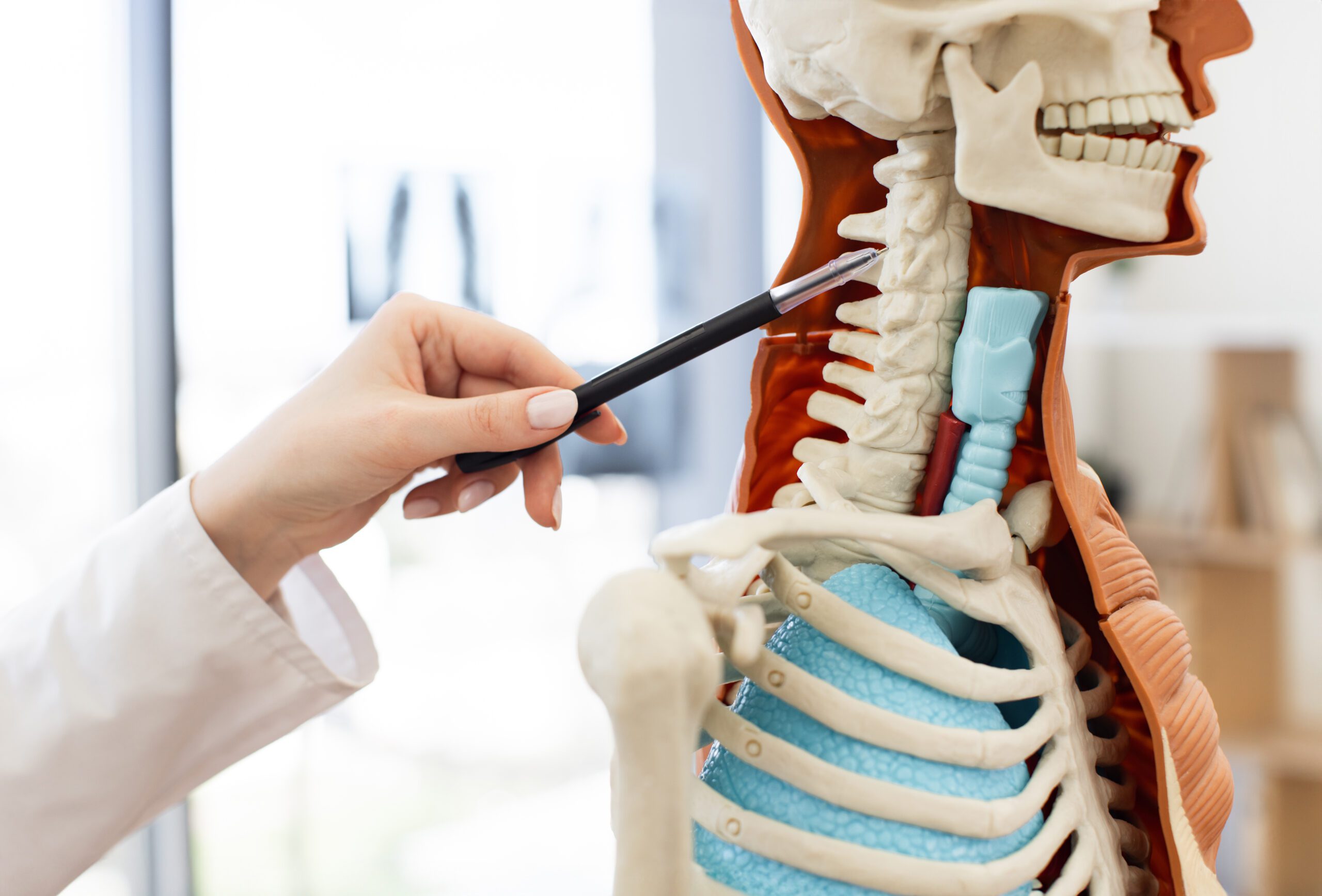From Injury to Compensation: How Chiropractors and Nurse Practitioners Support Personal Injury Recovery After Car Accidents

Motor vehicle accidents (MVAs) can leave a lasting impact, not just on your health but also on your legal and financial future. Whether you’re dealing with back pain, whiplash, or nerve damage, one thing is clear: getting the right medical care is essential for healing and protecting your legal rights.
At the intersection of health and law, chiropractors and nurse practitioners (NPs) play a powerful role in personal injury cases. Their medical expertise, combined with accurate documentation and integrative treatment, forms the backbone of strong injury claims. Clinics like ChiroMed are leading the way by combining chiropractic and advanced clinical support to help accident victims recover and receive fair compensation.
Why Medical Documentation Is the Cornerstone of Personal Injury Cases
In personal injury law, everything depends on proving the injury. Without clear medical records, diagnostic tests, and expert insights, insurance adjusters and attorneys may not recognize the full impact of a car accident on your body.
Chiropractors and nurse practitioners are trained to evaluate, document, and treat musculoskeletal and nerve injuries common after MVAs. Their reports become legal evidence that connects the accident to the pain, suffering, and loss of function the patient is experiencing.
According to Auto Accident Doctors, a partnership between legal professionals and chiropractors is vital to proving fault and the severity of injuries. When providers like those at ChiroMed prepare comprehensive injury reports, they strengthen the patient’s legal position.
The Role of Chiropractors in Identifying Hidden Injuries
After a crash, symptoms such as neck stiffness, shoulder pain, or headaches may not appear immediately. Chiropractors are specially trained to detect underlying spinal misalignments, ligament sprains, and nerve impingements that traditional exams may miss.
These are just a few of the common injuries they diagnose and treat:
- Whiplash: A quick back-and-forth motion that strains the neck’s soft tissues.
- Herniated Discs: Common in rear-end collisions, leading to numbness or radiating pain.
- Facet Joint Injuries: Small joint damage that causes stiffness and localized pain.
- Nerve Entrapments: Often missed in emergency rooms, but caught through spinal exams and muscle testing.
According to the Talbott Law Firm, chiropractors provide critical evaluations that show how MVAs impact the spine. This not only directs treatment but also helps attorneys demonstrate the cause and extent of the injury in court.
Nurse Practitioners Fill in the Gaps with Comprehensive Care
Nurse practitioners (NPs) are licensed to assess patients, order diagnostic imaging, prescribe medications, and treat patients with chronic or systemic conditions. When integrated into personal injury care, NPs help ensure nothing is overlooked.
After an accident, patients may experience:
- Anxiety, depression, or post-traumatic stress
- Sleep disturbances and chronic fatigue
- Digestive upset due to trauma or pain medication
- Hormonal or metabolic imbalances affecting healing
Nurse practitioners address these issues while supporting the chiropractor’s musculoskeletal care plan. According to Health Coach Clinic, NPs are also key players in helping with insurance and legal documentation, providing accurate timelines of patient improvement or setbacks.
The Importance of Diagnostic Imaging and Testing
To verify injury severity and origin, providers use imaging and testing such as:
- X-rays to assess bone and joint alignment
- MRI scans to visualize soft tissue and nerve damage
- Digital Motion X-rays to detect subtle instabilities
- EMG/NCV testing to measure nerve conduction problems
ChiroMed providers may utilize advanced diagnostics to catch injuries that are often missed in emergency rooms. These findings are then translated into clear, court-usable documentation.
As explained by The R.A.C.K. APC, the diagnostic phase of care is crucial in both healthcare and legal settings. Without it, critical injuries may go untreated and uncompensated.
Supporting Attorneys with Expert Testimony and Legal Documentation
Chiropractors and nurse practitioners don’t just treat injuries—they provide the language attorneys use to argue cases. From SOAP notes to diagnostic codes, these providers produce documents that align with legal and insurance standards.
Some examples include:
- ICD-10 diagnosis codes for every injury
- CPT procedure codes for each treatment step
- SOAP progress notes documenting improvement or deterioration
- Functional capacity evaluations measuring movement and pain levels
- Narrative summaries and affidavits detailing care provided
According to Pemberton Personal Injury, chiropractors may be called to testify in court. Their expert opinions, backed by objective imaging and consistent records, often make the difference between a denied claim and a fair settlement.
How Integrated Clinics Like ChiroMed Streamline Recovery
ChiroMed represents a new model in personal injury care—one that combines chiropractic, medical, and rehabilitative services under one roof. This integrative approach saves patients time and ensures cohesive, whole-body treatment.
The benefits of integrated care after a car crash include:
- Fewer gaps between appointments and evaluations
- Coordinated records for both attorneys and insurance companies
- Faster identification of complications or non-obvious injuries
- Improved outcomes due to combined chiropractic and medical treatment
This model mirrors successful approaches by dual-scope providers, such as Dr. Alexander Jimenez, DC, APRN, FNP-BC, who offers comprehensive care and legal support in El Paso. According to Jimenez’s post-accident care model, integrated teams are especially effective in delivering both medical clarity and legal strength.
Real Case Example: From Impact to Recovery
Imagine a patient named Laura who was rear-ended at a stoplight. She goes to the emergency room, where she’s told everything is “normal.” Days later, she can no longer turn her neck and experiences tingling down her arm.
At ChiroMed, the chiropractor identifies cervical misalignment and orders an MRI. A nurse practitioner also evaluates Laura, uncovering high inflammation markers and anxiety affecting her sleep.
Together, they:
- Create a treatment plan of spinal adjustments, physical therapy, and stress management
- Document her improvement with each visit
- Prepare legal records and affidavits for her attorney
- Recommend a neurologist when symptoms persist
Three months later, Laura is pain-free—and she receives full compensation for medical costs and lost wages, thanks to thorough medical records and expert testimony.
Protecting Your Rights After an Accident
It’s easy to feel overwhelmed after a crash. But acting fast to seek medical care isn’t just about healing—it’s also about securing the compensation you’re entitled to. Chiropractors and nurse practitioners at integrated clinics, such as ChiroMed, are trained to assist on both fronts.
Their services include:
- Emergency injury evaluation
- Complete documentation of all symptoms and treatments
- Legal liaison services with attorneys and insurers
- Long-term support for lingering pain or disability
The team-based approach ensures you’re not left dealing with pain, paperwork, and legal stress alone.
Conclusion: Chiropractors and Nurse Practitioners Are Essential in Personal Injury Recovery
In the world of personal injury law, proper medical care is your greatest tool. Chiropractors and nurse practitioners aren’t just healers—they’re essential witnesses in your journey from injury to justice.
At ChiroMed, we believe in a comprehensive, patient-first approach. Our team combines diagnostic precision, hands-on care, and legal clarity to help accident victims recover physically and financially. From soft tissue injuries to complex spinal damage, our providers are ready to stand beside you, both in the clinic and in the courtroom.
If you’ve been in an accident, don’t wait. Early intervention by the right team could be the key to both your recovery and a successful outcome in your case.
References
- Auto Accident Doctors. (n.d.). How Attorneys and Chiropractors Work Together.
- The R.A.C.K. APC. (n.d.). Athletic Trainer vs Physical Therapist.
- Dr. Alexander Jimenez. (2025). Chiropractic-Nurse Integration in Post-Accident Care.
- Talbott Law Firm. (2017). How Chiropractic and Personal Injury Fit Together.
- Pemberton Personal Injury. (n.d.). Chiropractor’s Role in Supporting Personal Injury Cases.
- Beyond Medical. (n.d.). How Chiropractors and Personal Injury Attorneys Work Together.
- Health Coach Clinic. (n.d.). Advantages of Chiropractic and Nurse Practitioners in Recovery.



